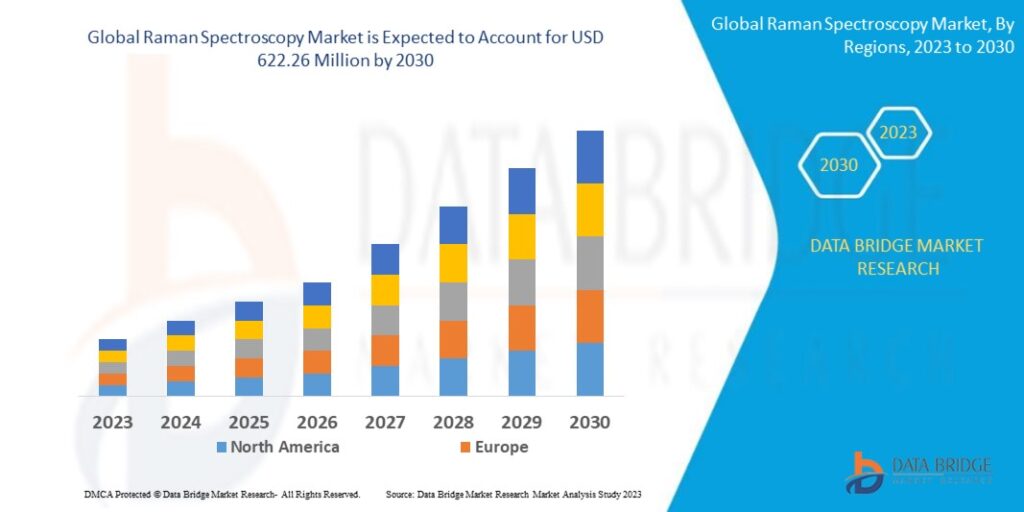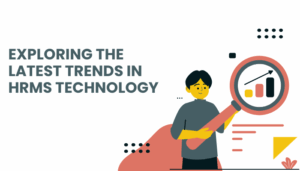Introduction
Raman spectroscopy is a powerful analytical technique used to determine the molecular composition and structure of materials. Based on the inelastic scattering of light (Raman scattering), it provides unique vibrational information about molecules, enabling precise identification and characterization of substances. Over the past two decades, Raman spectroscopy has evolved into a critical tool across numerous industries including pharmaceuticals, chemicals, materials science, and forensic analysis.
As scientific research expands and industrial demand for advanced material characterization increases, the global Raman spectroscopy market continues to grow steadily. This article explores the key factors driving market growth, leading technologies, applications, and the outlook for the future.
What is Raman Spectroscopy?
Raman spectroscopy involves the interaction of monochromatic light (usually from a laser) with molecular vibrations within a sample. When light hits the molecules, most photons are elastically scattered (Rayleigh scattering), but a small fraction undergoes energy shifts due to interactions with vibrational modes—this is Raman scattering. The resulting spectrum serves as a molecular fingerprint of the sample.
Because Raman spectroscopy is non-destructive and requires minimal sample preparation, it has become highly desirable for both laboratory and field-based analysis.
Market Overview
The global Raman spectroscopy market was valued at approximately USD 750 million in 2024, and is projected to grow at a CAGR of 7–9% over the next five years. The growth is fueled by:
-
Expanding pharmaceutical and biotech research
-
Rising adoption in quality control and materials testing
-
Advances in compact and portable Raman devices
-
Growing demand for forensic and environmental monitoring tools
The market is characterized by a blend of large analytical instrument manufacturers and innovative startups offering specialized Raman solutions.
Key Market Segments
1. By Product Type
-
Benchtop Raman Spectrometers
-
Portable/Handheld Raman Spectrometers
-
Micro-Raman Spectrometers
-
Hyphenated Raman Systems (e.g., Raman with FTIR, SEM)
2. By Application
-
Pharmaceutical and Biotechnology
-
Material Science and Nanotechnology
-
Chemicals and Petrochemicals
-
Forensic Science
-
Environmental Monitoring
-
Academic and Research Institutions
3. By End User
-
Research Laboratories
-
Manufacturing and QA/QC Facilities
-
Forensics Departments
-
Environmental Agencies
4. By Geography
-
North America: Dominates the market due to advanced research infrastructure and strong pharma presence.
-
Europe: Strong adoption in academic and government research.
-
Asia-Pacific: Rapidly growing due to expanding industrial and pharmaceutical sectors in China, India, and Japan.
Technological Innovations
1. Portable and Handheld Devices
Modern Raman spectrometers are becoming increasingly miniaturized and user-friendly. Handheld Raman devices are now widely used in field analysis—for instance, in customs inspections, hazardous material identification, and pharmaceutical validation.
2. Surface-Enhanced Raman Spectroscopy (SERS)
SERS enhances Raman signals by several orders of magnitude using metal nanoparticles. It’s increasingly applied in trace detection of contaminants, explosives, and biomarkers.
3. Integration with AI and Machine Learning
Advanced Raman systems now incorporate AI-driven data interpretation for real-time, automated identification of compounds, improving accuracy and efficiency in industrial applications.
4. Fiber Optic Probes
Remote sensing capabilities through fiber optic Raman probes allow in situ analysis of samples in hazardous or hard-to-reach environments.
Market Drivers
-
Pharmaceutical Industry Demand
Raman spectroscopy is integral in drug formulation, raw material verification, and real-time release testing. Regulatory agencies such as the FDA have endorsed Raman for PAT (Process Analytical Technology) applications. -
Materials Characterization
From carbon nanotubes and polymers to semiconductors and ceramics, Raman spectroscopy is vital for studying structural properties and defects at the molecular level. -
Increased Regulatory Standards
Stringent quality and safety standards across pharmaceuticals, food, and chemicals sectors are pushing manufacturers to adopt reliable and rapid analytical techniques like Raman. -
Forensic and Security Applications
Law enforcement agencies use Raman tools for non-invasive identification of narcotics, explosives, and counterfeit goods. -
Environmental Monitoring
Raman spectroscopy helps detect microplastics in water, monitor air quality, and analyze soil and sediments for pollutants.
Challenges in the Market
-
High Cost of Equipment: Advanced Raman systems can be expensive, limiting accessibility for small-scale users or academic institutions in developing regions.
-
Fluorescence Interference: Some samples fluoresce when exposed to laser light, which can overwhelm the weak Raman signals.
-
Complex Data Interpretation: Requires skilled analysts or sophisticated software, though machine learning is reducing this barrier.
Key Players in the Market
Some leading companies in the Raman spectroscopy market include:
-
Thermo Fisher Scientific Inc.
-
Renishaw plc
-
Bruker Corporation
-
Horiba Scientific
-
WITec GmbH
-
Agilent Technologies Inc.
-
Metrohm AG
-
PerkinElmer Inc.
-
B&W Tek (now part of Metrohm)
These companies offer a range of Raman solutions tailored to different industries and research needs, including integration with microscopy and other spectroscopic techniques.
Future Outlook
The future of the Raman spectroscopy market is shaped by several promising trends:
-
Development of Low-Cost Raman Devices: Making the technology more accessible to educational institutions and SMEs.
-
Expanded Use in Clinical Diagnostics: Potential applications in detecting cancer, monitoring blood glucose, and identifying pathogens.
-
Increased Adoption in Food Safety Testing: Rapid, non-destructive testing of contaminants and adulterants in food products.
-
Integration with Other Analytical Tools: Combining Raman with techniques like NMR, mass spectrometry, and electron microscopy for deeper analytical insights.
As industries and governments increasingly emphasize safety, sustainability, and innovation, Raman spectroscopy will continue to grow as a go-to solution for precise material analysis.
Conclusion
Raman spectroscopy has established itself as a versatile, non-destructive, and powerful analytical tool with applications spanning across science, industry, and law enforcement. With growing technological sophistication and broadening industrial relevance, the global Raman spectroscopy market is poised for robust growth. As innovation lowers barriers to entry and enhances performance, Raman is set to play an even greater role in shaping the future of material and molecular analysis.
Get more Details
https://www.databridgemarketresearch.com/reports/global-raman-spectroscopy-market






